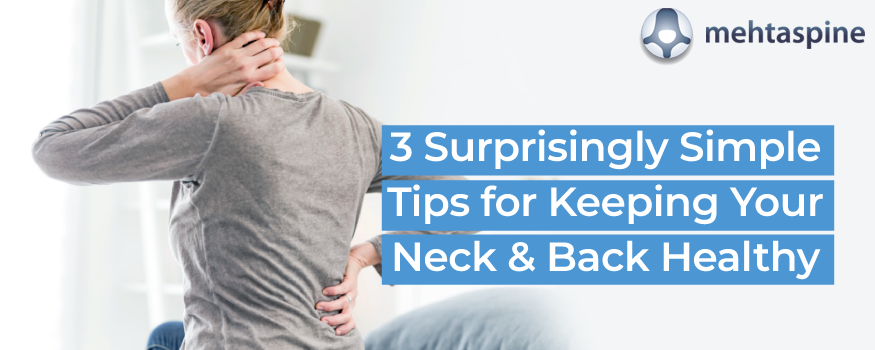3 Surprisingly Simple Tips for Keeping Your Neck & Back Healthy
Neck and back account for more than 85% of the problems in adults, after age 30. From that mild annoying ache to severe debilitating pain, the scale of severity can vary from individual to individual but no one truly escapes from this fact of life.
“Most people experience back pain on regular basis postage 40. Due to lack of exercise and postural problems back, pain tends to show up in individuals in their 30s too.” says the top orthopaedic spine specialist in UK Mr Jwalant S Mehta.
It is common for the back and neck to get stiff and aches as we age. However, they are showing up earlier than expected in today’s adults which is mostly due to bad postural habits, inactivity and poor lifestyle choices. Due to a variety of these factors, the spine and ages tend to age quite quickly showing up stiffness, creakiness, aches, strains and tightness that may last days or weeks without adequate treatment.
Fortunately, we all can keep our necks and back healthy and significantly delay their onset by following a few simple tips below:
- Move More: Sitting for prolonged periods of time without a break is one of the major causes of back pain in the current generation. Static sitting postures increase the stress on the neck, and back. Legs and arms put significant pressure on spinal discs and back muscles. Naturally, we tend to slouch around in a sitting position and this overstretches ligaments in the spine and further strains the spinal discs. “Always try to stand, stretch and walk for every half an hour of prolonged sitting to loosen the ligaments, tendons, and joints to cut the damage”, suggest back pain specialist and orthopaedic spine surgeon, Mr Jwalant S Mehta.
- Maintain a good posture:Posture is another silent cause of back and neck problems that most people ignore. Two things that stop people from adopting good postures are a) lack of the right knowledge about the right posture and b) Inability to hold the said posture for long. However, we aim to solve both cases right now. Let’s start with the simplified ideal posture routine:
- Sit tall on your chair with your head over the shoulders and the chin at a 90-deg angle. Keep your neck straight, and draw your shoulders back and down onto your spine while you pop your lower belly and chest slightly out. Hold these for 3 sets of 30 seconds each and repeat the same every hour to slowly adapt to your routine. You can slightly stretch your neck side wards for 20-30 secs to relax the neck and ease the tension.
- It may not be possible to hold an amazing posture all day and it is totally fine that way. But be more mindful about the posture and correct it when you seem to fall back on past habits.
- Treat your neck kindly and avoid tech-neck:The neck that bends forward and stays for prolonged periods of time is the leading cause of neck stiffness poor posture, neck spasms and even headaches. Tech-neck as it is called now is rampant in the younger generation who spent all their time on a computer or mobile phone with the neck bent downwards. Every 15 degrees of bent neck doubles the stress put on the neck and at 45-degree, the neck has to bear almost a 50-pound strain which further aggravates the neck and back. This additional pressure strains the disc more wearing them out and increasing the disk rupture.
One can alleviate these symptoms is to breaking this cycle by moving more – we have already discussed this above. The second way to ease pressure is to sit in a 25-30 degree recline position with good lumbar support to cut down the pressure on the spine. So in consolidation: sit in a reclined position with good lumbar support, chin at 90-deg and chest out and shoulders backed down.
That said, back and neck pain may also be due to inherent spinal problems that need treatment right away. If you have already been adopting the above suggestions but are still experiencing neck and back pain then it is highly advisable to consult an expert orthopaedic spine specialist in the UK.


